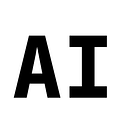Artifacts in Claude.ia
“You get an artifact, and you get an artifact, and you get an artifact.”

In the realm of machine learning and artificial intelligence, the term “artifact” carries significant weight. Traditionally, it refers to the outputs generated during an AI model's training process. These outputs can take various forms, ranging from a fully trained model ready for deployment to intermediate checkpoints that capture the model’s state at different stages of training. Even files created as byproducts of the training process fall under this broad definition.
However, in the context of AI tools and collaborative platforms like Claude.ai, the concept of artifacts expands to encompass a wider range of digital products. These AI artifacts are not limited to just the final outputs; they represent the entire spectrum of elements involved in the AI pipeline. They can be inputs that kickstart a process, outputs that represent the culmination of AI work, or intermediate results that serve as stepping stones in more complex workflows.
To better understand the scope of AI artifacts, we can categorize them into six primary types, each corresponding to a crucial step in the AI development pipeline. Data artifacts form the foundation, representing the raw material that fuels AI systems. Knowledge artifacts encapsulate structured information and insights derived from data analysis. Model artifacts are the heart of AI systems, embodying the trained algorithms capable of making predictions or decisions. Application artifacts represent the practical implementation of AI models in user-facing tools or services. Algorithm artifacts are the codified procedures and methodologies that drive AI processes. Lastly, benchmark artifacts provide standards and metrics for evaluating the performance and efficacy of AI systems.
This comprehensive view of artifacts in AI highlights their role not just as end products but as integral components throughout the entire lifecycle of AI development and deployment. By recognizing and leveraging these diverse types of artifacts, teams can create more robust, transparent, and collaborative AI workflows, ultimately leading to more powerful and responsible AI solutions.
Anthropic has just announced that Artifacts are now available to all Claude.ai users, regardless of their plan tier. This feature has been in preview since June and has already seen millions of creations, highlighting its immense popularity and utility. What excites me most about Artifacts is how they transform the interaction between humans and AI from a simple conversation into a truly collaborative experience. As someone who frequently uses AI tools in my work, I can attest to the importance of visualising and iterating on ideas quickly. Artifacts provide a dedicated space for this, allowing users to see their creations instantly and build upon them in real time.
The applications of this technology are vast and varied. Artifacts can be used to create complex scientific diagrams or to prototype experimental setups. But the potential extends far beyond academia. Software developers can use it to map out intricate system architectures, while product managers can rapidly design and test interactive prototypes. Even marketers who want to analyse marketing trends from social media can benefit by creating dynamic campaign dashboards to track performance metrics. Dynamic campaign dashboards are a powerful tool for marketers who want to analyze social media trends, as they can track key performance metrics in real-time.

